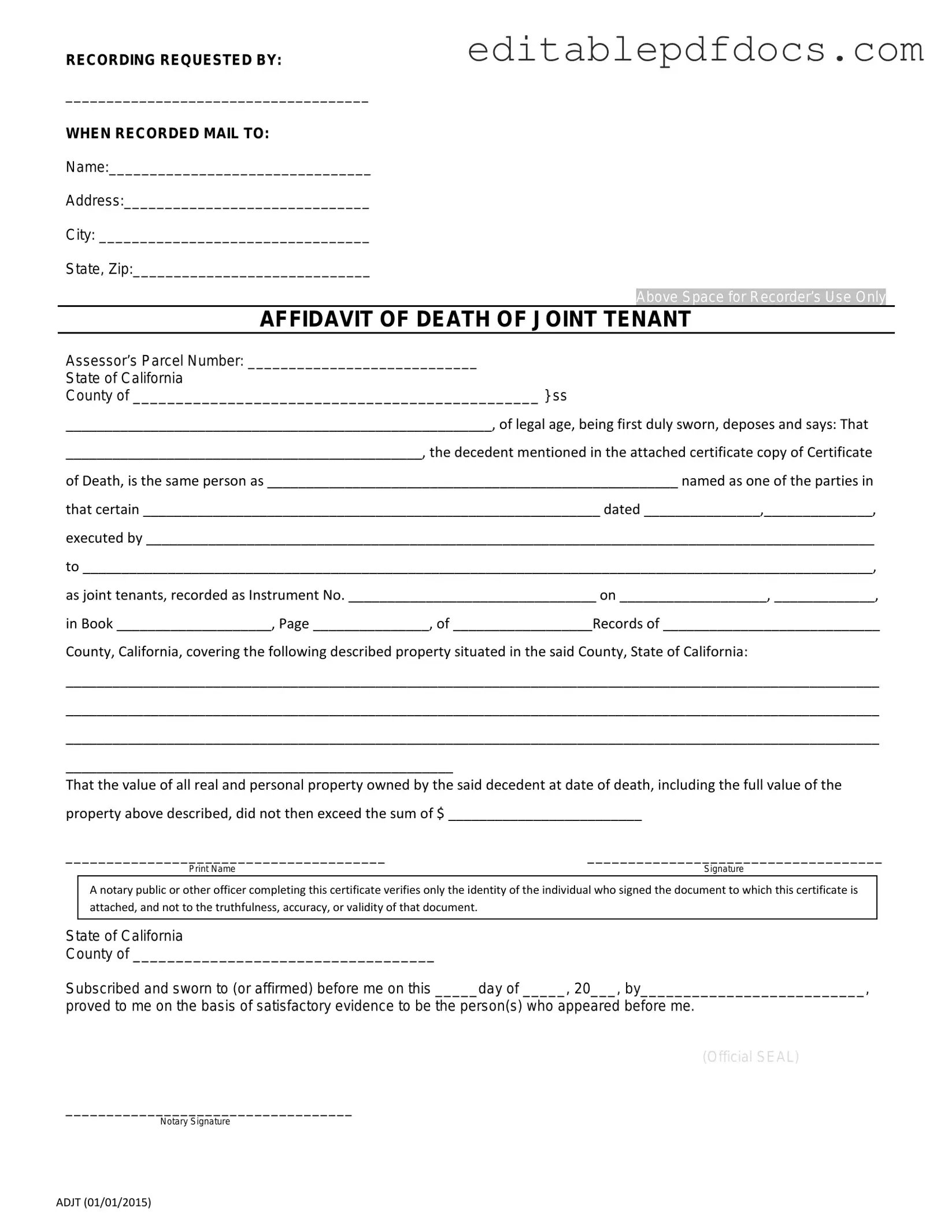Filling out the California Death of a Joint Tenant Affidavit can be straightforward, but many make common mistakes that can delay the process. One frequent error is failing to provide accurate information about the deceased joint tenant. It’s crucial to ensure that names, dates, and other personal details are correct. Any discrepancies may lead to complications in the transfer of property.
Another mistake is neglecting to sign the affidavit. While it may seem obvious, many individuals overlook this step. Without a signature, the affidavit is incomplete and cannot be processed. Always double-check that all required signatures are present before submitting the form.
People often forget to include supporting documentation. This affidavit typically requires a death certificate or other proof of death. Not attaching these documents can result in delays or even rejection of the affidavit. Always gather the necessary paperwork ahead of time.
Some individuals may also misinterpret the instructions on the form. Each section has specific requirements, and misunderstanding these can lead to incorrect information being provided. Taking the time to read the instructions carefully can save a lot of hassle later on.
Another common oversight is not providing the correct property description. The affidavit must clearly identify the property being transferred. Vague descriptions or missing details can create confusion and complicate the transfer process.
People sometimes fail to check for additional requirements based on local jurisdiction. Different counties may have specific rules or additional forms needed. Researching local requirements ensures that you meet all necessary criteria.
In some cases, individuals forget to notify all relevant parties about the death. While this may not directly affect the affidavit, it can create issues later on, especially if there are other heirs or interested parties. Keeping everyone informed helps prevent disputes down the line.
Another mistake is not keeping copies of the submitted affidavit and supporting documents. It’s important to maintain records for personal reference and for any future inquiries. Having copies can be invaluable if questions arise later.
Lastly, many people underestimate the importance of timing. Submitting the affidavit promptly after the death is essential. Delays can complicate matters, especially if there are outstanding debts or taxes related to the property. Taking action sooner rather than later is always advisable.
